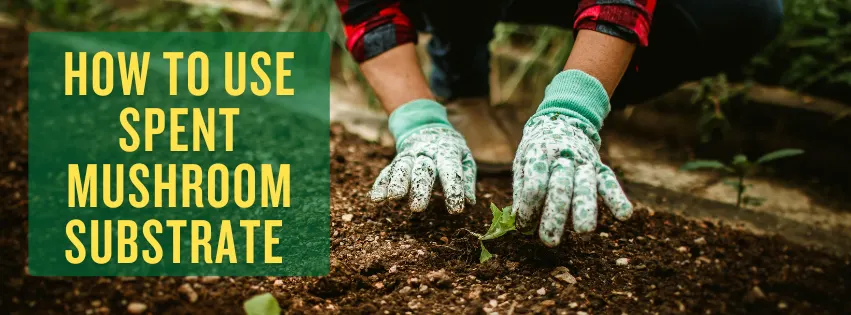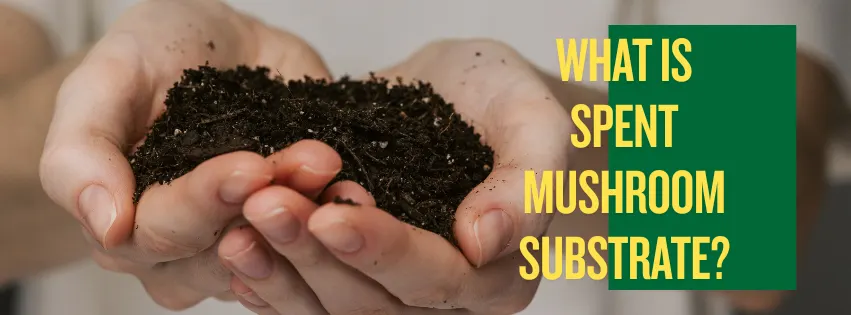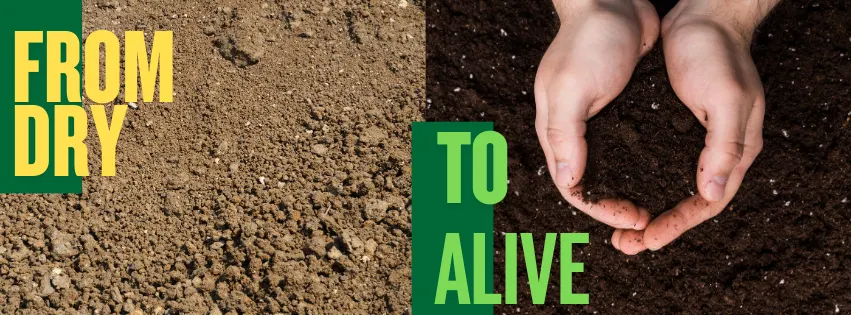
How to Use Spent Mushroom Substrate (Mushroom Compost) in Farming and Gardening
The Value of Spent Mushroom Substrate
Across the world, millions of tons of Spent Mushroom Substrate (SMS) — commonly called Mushroom Compost — are produced every year as a by-product of mushroom farming. In many places, this material is seen as waste. But for farmers and gardeners, it is actually a hidden resource for soil improvement and crop growth.
Mushroom compost is rich in organic matter, calcium, nitrogen, and beneficial microbes. Whether you are growing vegetables in India, vineyards in Europe, cereals in Africa, or backyard gardens in America, mushroom compost can:
Improve soil fertility
Support soil microbes that make nutrients available
Reduce chemical fertilizer needs
Increase crop yield naturally
This article explains how to use spent mushroom substrate step-by-step in farming and gardening, with crop-specific guidance and simple farmer tips.
How to Use Spent Mushroom Substrate in Farming
1. Field Preparation with Mushroom Compost
Apply 2–4 tons per hectare (or 1–2 tons per acre).
Spread evenly across the field and incorporate into the soil before sowing.
Improves aeration in heavy clay soils and water-holding in sandy soils.

2. How to Use Spent Mushroom Substrate in Vegetable Farming
Vegetables respond strongly to organic matter. Mushroom compost gives them steady nutrition and better soil structure.
| Vegetable | Recommended Use | Method |
|---|---|---|
| Tomato, Chili, Eggplant | 2–3 kg per planting hole | Mix with soil before transplanting |
| Cabbage, Cauliflower, Broccoli | 2–4 tons per hectare | Incorporate into beds before planting |
| Onion, Garlic | 1.5–2 tons per hectare | Mix into topsoil before sowing |
| Cucumbers, Pumpkins, Gourds | 2–3 tons per hectare | Apply along ridges/furrows |
| Potatoes, Root Vegetables | 1–2 tons per hectare | Mix in rows; improves tuber formation |
3. How to Use Mushroom Compost in Grain & Cereal Crops
Wheat & Rice (Paddy): Apply 2 tons/ha of mushroom compost before planting.
Maize, Barley, Sorghum: 2–3 tons/ha improves organic carbon and microbial activity.
Increases soil resilience against drought.
4. How to Use Spent Mushroom Substrate in Pulses & Legumes
Apply 1.5–2 tons per hectare in fields growing beans, peas, lentils, soybeans, or chickpeas.
Encourages beneficial microbes and supports nitrogen-fixing bacteria.
5. How to Use Mushroom Compost in Orchards & Plantations
Fruit crops love mushroom compost because it improves root growth and fruit quality.
| Crop | Compost Needed | Method |
|---|---|---|
| Mango, Citrus, Guava (Tropical Fruits) | 5–10 kg per tree | Apply around root zone twice yearly (before rains and after harvest) |
| Banana, Papaya | 2–3 kg per plant | Mix with soil during planting and again at flowering stage |
| Grapes, Pomegranate, Apple, Olive | 2–4 tons per hectare | Apply along rows or basins at pruning/flowering season |
| Coffee, Tea, Cocoa Plantations | 1–2 tons per hectare | Use as mulch around bushes/trees; improves soil moisture and fertility |
| Coconut, Arecanut, Oil Palm | 5–8 kg per palm | Apply in circular basins around trunk; cover with soil/mulch |
How to Use Spent Mushroom Substrate in Gardening
1. Seedlings & Nursery Beds
Mix 20–25% mushroom compost with garden soil or cocopeat.
Do not use 100% compost; seedlings are sensitive to salts.
2. Vegetable Gardens (Home Use)
Mix 1 part compost with 2–3 parts soil for container vegetables like tomato, capsicum, and brinjal.
For leafy greens like spinach, lettuce, and coriander → keep compost at 20% maximum.
3. Flower Gardening
Roses, marigolds, petunias, and hibiscus thrive with 25–30% mushroom compost in potting mix.
4. Lawns & Landscaping
Spread a thin layer (1 cm) of mushroom compost twice a year.
Keeps grass greener and reduces need for chemical fertilizers.
Precautions When Using Mushroom Compost
While mushroom compost (spent mushroom substrate) is very useful, it must be handled properly to avoid harming crops. Here are the key precautions:
1. Check if the Compost is Mature
Fresh SMS may still be “hot” (not fully decomposed).
Immature compost uses up nitrogen from the soil instead of giving it to plants.
How to check maturity: It should be dark brown, crumbly, with an earthy smell (not ammonia or sour smell).
2. Watch the Salt Levels (EC)
Fresh compost often has high salts (electrical conductivity).
High salts can “burn” seedling roots and sensitive crops.
Solution: Rinse or leach fresh compost with clean water 2–3 times before use.
3. pH Balance is Important
Mature mushroom compost usually has a pH close to neutral (6.5–7).
Fresh compost can be slightly alkaline (7.5–8).
Seedlings and leafy crops prefer 6.0–6.8.
Solution: Mix compost with cocopeat, leaf mold, or vermicompost to balance pH.
4. Do Not Use 100% Compost for Seedlings
Seedlings are delicate and need light soil.
100% compost can be too heavy and salty.
Always mix 20–30% compost with soil, sand, or cocopeat.
5. Avoid Over-Application
Too much compost can lead to nutrient imbalance (too much calcium, salts, or organic matter).
Recommended doses:
Farms: 2–4 tons per hectare (1–2 tons per acre).
Orchards: 5–10 kg per tree.
Gardens/Pots: 20–30% of potting mix.
6. Beware of Weed Seeds in Fresh Compost
If compost is not pasteurized properly, it may contain weed seeds or pathogens.
Solution: Solarize compost (spread and cover with clear plastic under sun for 2–3 days) before use.
7. Check Moisture Content
Very wet compost is heavy and costly to transport.
Excess water means less nutrients per kg.
Buy compost with balanced moisture (not too wet or dusty dry).
8. Storage Precautions
Store compost in a dry, shaded place.
Do not leave in open rain — nutrients may leach away.
Cover with tarpaulin if stored outdoors.
9. Crop-Specific Sensitivity
Leafy vegetables (spinach, lettuce, coriander) are more sensitive to salts → use less compost (20%).
Woody plants (trees, grapes, bananas) can tolerate more (50%).
👉 Summary for Farmers & Gardeners:
Use only mature compost, dilute it with soil, check pH and salts, and avoid over-application. This way, mushroom compost becomes a safe and powerful soil improver.
FAQs: How to Use Spent Mushroom Substrate (Mushroom Compost)
1. Can I use spent mushroom substrate directly on my fields?
You can, but it is better to mix it into the soil during land preparation. Direct surface spreading of fresh compost may cause salt issues.
2. Is mushroom compost safe for seedlings?
Not directly. Seedlings are delicate. Always use 20–25% mushroom compost mixed with soil or cocopeat. Avoid 100% compost in seed trays.
3. How much mushroom compost should I apply per acre/hectare?
Field crops (wheat, maize, rice): 1–2 tons/acre (2–4 tons/ha).
Vegetables: 2–3 tons/acre (5–7 tons/ha).
Fruit trees: 5–10 kg per tree.
Gardens/Pots: 20–30% of potting mix.
4. Can mushroom compost replace chemical fertilizers?
It reduces the need for chemical fertilizers by improving soil fertility. But for maximum yield, use integrated nutrient management (combine compost + minimal fertilizers or biofertilizers).
5. Is mushroom compost organic?
It is a natural by-product made from straw, manure, and other organics. However, “organic certification” depends on local farming standards. Many natural and sustainable farmers use it safely.
6. How long does mushroom compost last in soil?
Mushroom compost slowly releases nutrients for 3–6 months. The organic matter continues improving soil structure for up to a year.
7. Can I use mushroom compost for potted plants and home gardens?
Yes. Mix 1 part compost with 2–3 parts soil for vegetables and flowers. For leafy greens, keep compost at 20% maximum.
8. Does mushroom compost have weed seeds or diseases?
Properly pasteurized mushroom compost is usually weed-free. If you suspect weed seeds, solarize or compost further before use.
9. Can mushroom compost be used for hydroponics?
No. Mushroom compost is only suitable for soil-based systems. Hydroponics needs sterile, inert media like cocopeat, perlite, or rockwool.
10. Does mushroom compost help with water retention?
Yes. In sandy soils, it increases water-holding. In heavy clay soils, it improves aeration and drainage.
11. How do I store mushroom compost if not using immediately?
Store in a cool, dry, shaded place. Keep covered with tarpaulin to protect from rain and nutrient leaching. Compost can be stored safely for 6–8 months if kept dry.
12. Which crops benefit the most from mushroom compost?
Vegetables: Tomato, chili, brinjal, cucumbers, cabbage, onion.
Cereals: Wheat, rice, maize.
Pulses: Beans, lentils, chickpeas, peas.
Fruits: Banana, mango, guava, grapes, apple.
Flowers: Rose, marigold, hibiscus, ornamental plants.
Mushroom Compost Supply for Farmers & Gardeners
We are producers and suppliers of high-quality Spent Mushroom Substrate (Mushroom Compost).
Bulk supply: 1–200 tons for farms
Bagged supply for gardeners
Delivery across North India and export enquiries
Tested, matured compost with balanced nutrients
👉 Call/WhatsApp: +91-703 733 5728
Quick Wrap Up
Knowing how to use spent mushroom substrate is the key to unlocking soil fertility and healthier crops. Whether you farm wheat in the U.S., grow grapes in Spain, cultivate rice in Asia, or maintain a garden in Africa — mushroom compost works everywhere as a natural, eco-friendly soil amendment.
As Albert Howard, pioneer of organic farming, said: “The health of soil, plant, animal and man is one and indivisible.” Mushroom compost is one step toward keeping that cycle alive.


